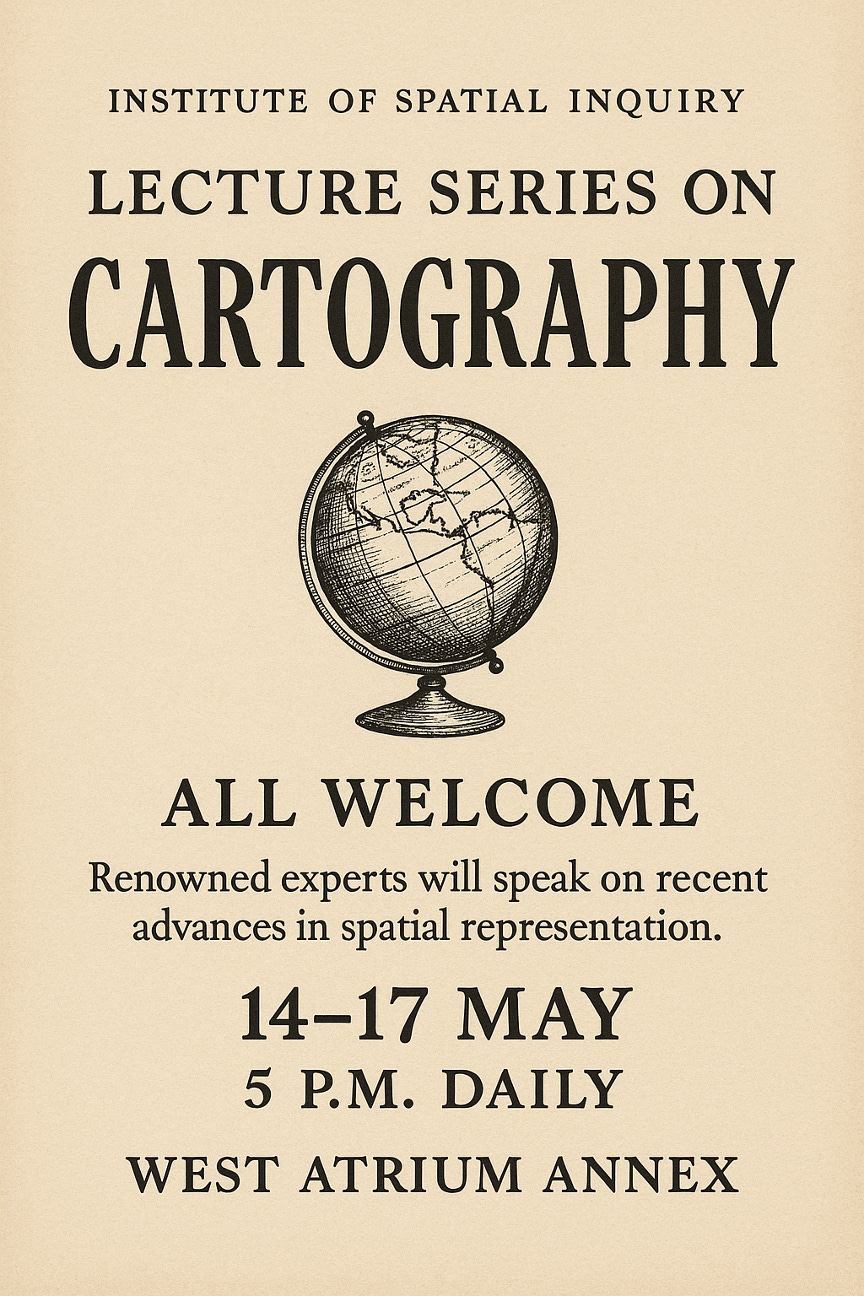Lecture 4: Cognitive and Semantic Cartography (Early 22nd Century)
Transcribed Lecture Fragments
Dr. Belinda Arkwright, Chair Emerita of Anomalous Geography, recorded the following seven-part lecture series during the 10th Annual Conference on Recursive Teleology.Now we arrive at what I like to call the 'Too Many Metaphors' phase of our discipline. Cognitive and Semantic Cartography emerged when topologists started dating linguists, semioticians began mapping café seating preferences, and no one, absolutely no one, stepped in to stop it.
This was a golden era for diagrams shaped like feelings and arguments that required topographical keys. Entire belief systems were plotted as elevation models. Confidence appeared as plateaus. Doubt became marshland. Guilt, for reasons we don’t need to go into, was almost always offshore. Thesis maps were produced entirely in conditional tense.
It was around this time that the first directional grammar matrices were installed, tools designed to prevent euphemisms from drifting too far west… or east. You get the drift. They almost did, my darlings.
Syntax had to be signed out in triplicate if you wanted to enter a high-context conversation corridor. The paperwork for passive voice clearance was legendary.
Diplomatic negotiations were no longer conducted around tables, but around what were called 'Relational Overlays'. Imagine maps that insist you both agree and apologize before you’re allowed to speak. Resolution zones were color-coded by shared assumptions and lunch compatibility.
Yes, Arnold, I know you attempted to declare semantic bankruptcy during your field practicum. I also know it was denied on the grounds that your coordinates still held emotional equity. That’s what therapy is for, dear.
Eventually, entire embassies were constructed as linguistic mazes. To reach the exit, one had to correctly conjugate sincerity while ascending three levels of tonal ambiguity. There was an international incident when someone mistook an idiom for a boundary marker. They’re still banned from metaphoric airspace.
In the end, field practice taught us that language is terrain, and terrain is biased. Every sentence is a path through a forest of assumptions. The best you can hope for is that your metaphors match your altitude. The worst is that they form a loop… and sometimes bring friends.


